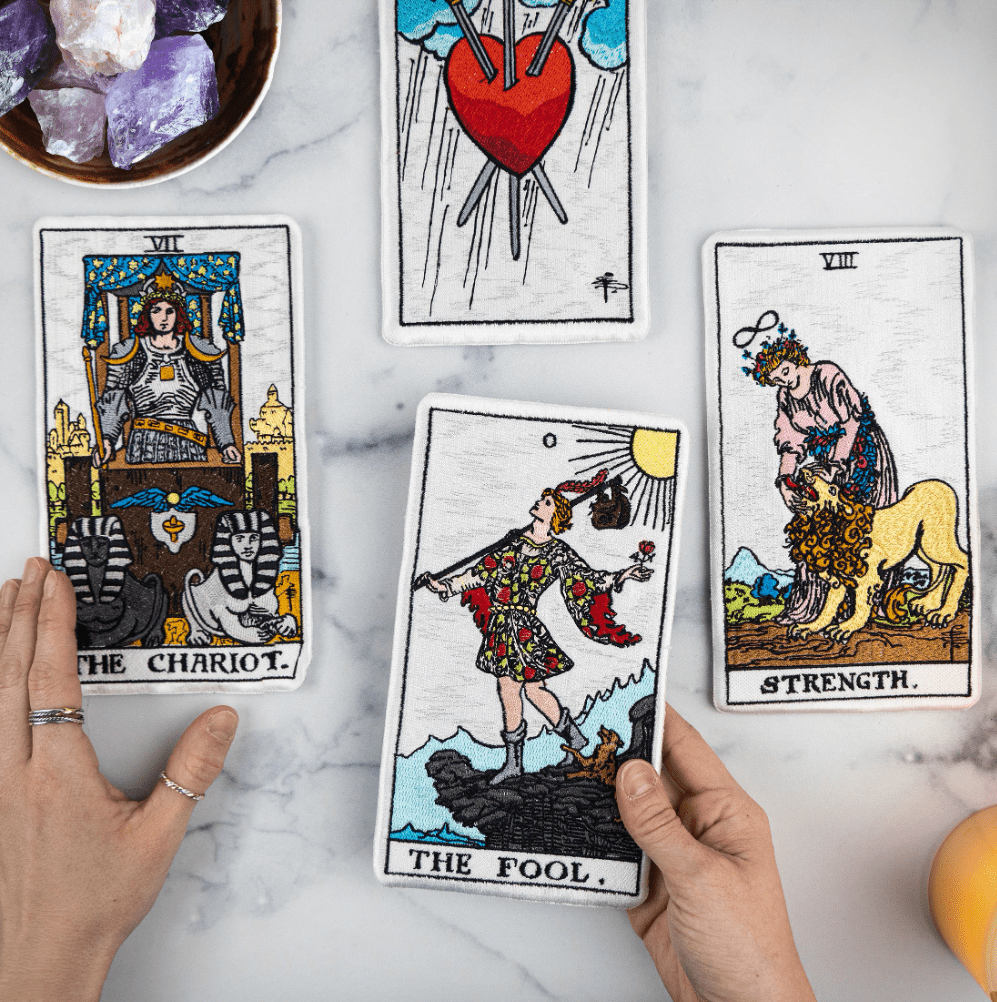Sadness, fear, hurt, shame, guilt, lonely, and this last emotion are considered the seven base emotions of humans.
happy (joy, happiness)
This word refers to the time and place a story takes place, and in The House on Mango Street it happens to be a neighborhood in Chicago.
setting
There were this many people living in Esperanza's house growing up. Remember everyone had to share rooms!
6 (six)
Words like "fish", "dish", and "wish" all share an ending sound, which poets and writers call this.
rhyme
Elenita, a local "witch" used these types of cards pictured below to tell the narrator's future.

tarot cards
Esperanza's little sister
Nenny
This emotion is a type of sadness that describes feeling bad for something that has or hasn't happened.
regret
Chicago, also called Paris of the Prarie, is found in this Missouri border state.
Illinois
This word is another name for a preteen or teenager.
adolescent
This literary term refers to a comparison using "like" or "as".
simile
After pulling money together, Esperanza, Rachel, and Lucy ride one of these together. It was quite a sight.
bicycle
Esperanza knew her as a child, and she noticed that she was always looking out the window for love.
Marin
This word best expresses feeling bad for someone but not pitying them (but also not quite empathizing with them.)
sympathy (sympathize)
Before the Great Depression, many people immigrated from this country to inner-city Chicago.
Mexico
This literary genre refers to a story that is about a main character growing up and dealing with life's problems.
coming of age
This literary technique gives human characteristics to objects and nature.
personification
Louie's cousin committed this crime but not before he damaged property and was caught by police.
stole a car
This boy lost his life after falling from a roof, but his death is told ambiguously in the vignette.
Angel Vargas
Provide a word that best describes Esperanza's tone "outsiders" in the following quote:
"Those who don't know any better come into our neighborhood scared. They think we're dangerous. They think we will attack them with shiny knives."
distant / critical / judged
This author of The House on Mango Street sometimes writes about her own experiences, living in Chicago.
Sandra Cisneros
This old-fashioned reference to what prisoners wore became a term to describe being trapped in a marriage. (This phrase usually refers to a "husband" or "wife.")
A poet may choose to repeat the first initial consonant sounds, such as the phrase "really, rascally rabbits!".
alliteration
This Photoshop was Esperanza's first job and named after a famous book about children never growing up. Ironically, Esperanza is forced to grow up fast after working here.
Peter Pan
Esperanza feels guilt and shame after making fun of this aunt who tragically passes away after a long fight with disability.
Aunt Lupe (Guadalupe)
This verb tense is used by authors to express not only uncertainy but also possibility. This tense expresses that things haven't happened or are they happening.
future tense
This term, which was created probably due to its rhyme, described the mass movement of a certain group of people from Chicago due to "anti-Mexican sentiment".
After escaping her abusive household as a child, Sally continues the cycle of abuse by doing this.
marrying a man with anger/control issues
This word describes an author's attidue toward the topic they are writing or speaking about.
tone
Geraldo had no identification, so police and doctors did little to help him after he was a victim of this crime.
This famous poet inspired the author of The House on Mango Street. The author died before she knew her fame. She was also a fan of the slant rhyme.
Emily Dickinson